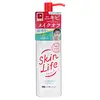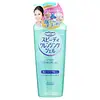What's inside
What's inside
 Key Ingredients
Key Ingredients

No key ingredients
 Benefits
Benefits

 Concerns
Concerns

No concerns
 Ingredients Side-by-side
Ingredients Side-by-side

O-Cymen-5-Ol
AntimicrobialGlycyrrhizic Acid
HumectantEthoxydiglycol
HumectantSorbitan Fatty Acid Ester
EmulsifyingPolyglyceryl-3 Decyltetradecyl Ether
EmulsifyingTuna Extract
Skin ConditioningSodium Hyaluronate
HumectantPapain
Skin ConditioningCoix Lacryma-Jobi Ma-Yuen Seed Extract
Skin ConditioningDextrin
AbsorbentButylene Glycol
HumectantAcrylic Acid
Hydroxypropyl Methylcellulose
Emulsion StabilisingParfum
MaskingDisodium EDTA
Methylparaben
PreservativeSodium Hydroxide
BufferingO-Cymen-5-Ol, Glycyrrhizic Acid, Ethoxydiglycol, Sorbitan Fatty Acid Ester, Polyglyceryl-3 Decyltetradecyl Ether, Tuna Extract, Sodium Hyaluronate, Papain, Coix Lacryma-Jobi Ma-Yuen Seed Extract, Dextrin, Butylene Glycol, Acrylic Acid, Hydroxypropyl Methylcellulose, Parfum, Disodium EDTA, Methylparaben, Sodium Hydroxide
Alternatives
Ingredients Explained
These ingredients are found in both products.
Ingredients higher up in an ingredient list are typically present in a larger amount.
Butylene Glycol (or BG) is used within cosmetic products for a few different reasons:
Overall, Butylene Glycol is a safe and well-rounded ingredient that works well with other ingredients.
Though this ingredient works well with most skin types, some people with sensitive skin may experience a reaction such as allergic rashes, closed comedones, or itchiness.
Learn more about Butylene GlycolDisodium EDTA plays a role in making products more stable by aiding other preservatives.
It is a chelating agent, meaning it neutralizes metal ions that may be found in a product.
Disodium EDTA is a salt of edetic acid and is found to be safe in cosmetic ingredients.
Learn more about Disodium EDTAThis ingredient is a semi-synthetic polymer created from cellulose. In case you need a refresher, cellulose is the main component of plant cell walls.
Hydroxypropyl Methylcellulose has many uses:
- emulsifier
- create a gel-like texture
- boost foam